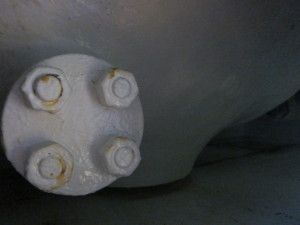Why I dislike NPT threads in a hydrocarbon system. Part 2
Ingolf Fra Holmslet has worked as a consultant and valve instructor in Norway since 1985. He has been responsible for the valve-training program for Statoil for the last 25 years.
Why I dislike NPT threads in a hydrocarbon system. Part two.
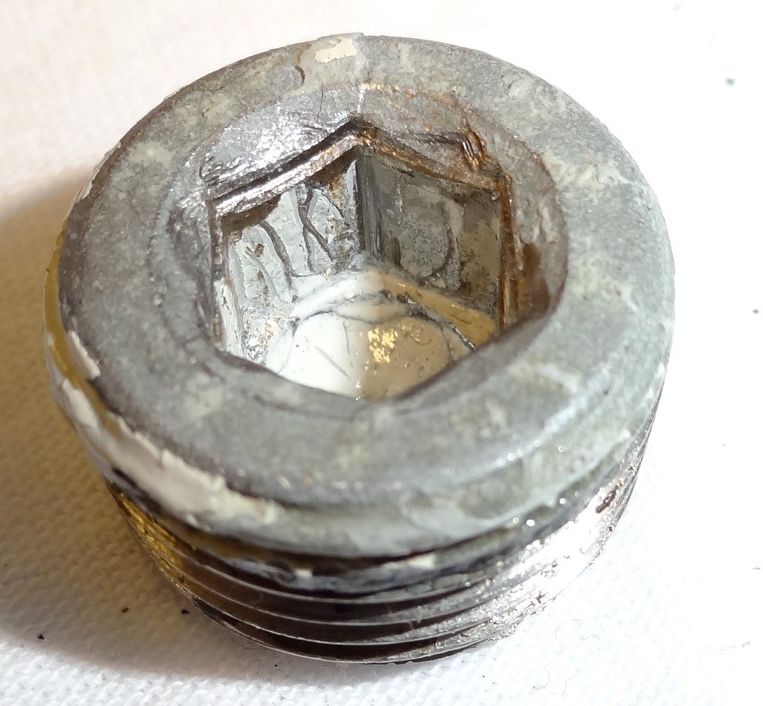
Fig. 6
As we discussed in the last issue, it can be difficult from the outside to see the difference between legal and illegal plugs. Even though the plug in fig. 6 is not permitted to be used in a pressurized system (and this is easy to see), I found it in the bottom of the body of a class 1500 ball valve. The plug in fig. 6 has 1.2 mm of steel at the bottom. You don’t need much imagination to understand why the valve manufacturer should never have put the thing in there at the first place. They only used it to plug the hole, so that nothing would come into the cavity during transportation. When the valve has been delivered, it is the buyer’s responsibility to check the valve and replace the illegal plug with a plug, auxiliary valve or lubricant fitting that is legal.
One major problem with the male NPT connection is that it does not take much to break it in the region of the transition to the valve body if there is a pipe extension to a lubricant fitting or a ½” valve installed in the female NPT. Connections used as a stepping-stone are easy broken. Vibration is also known to cause breakage to NPT threads. Because of this “weakness” in the NPT construction, some companies use RTJ connections in the valve body for connecting auxiliary valves (fig. 7). But you can’t use an RTJ connection instead of a drain/vent plug or lubricant fittings. So what about using BSPP, UNC or UNF cylindrical threads? As far as I can see, using cylindrical threads gives a number of advantages.
- First of all, you will always have as many male threads engaged into the female threads as designed, thereby always providing a full-strength connection.
- Secondly, you don’t have to use tape or paste to seal the connection, there are numerous ways of making the connection gas-tight, as I will demonstrate.
- Thirdly, when the threads are fully connected, the connection is usually supported against the body and therefore less vulnerable to breakage due to vibration, making it a stronger connection.
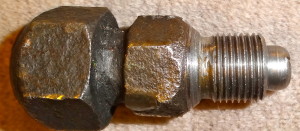
Fig. 8
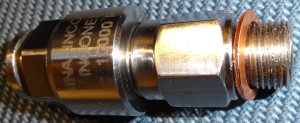
Fig. 9
Take a look at figure 8. This lubricant fitting is equipped with BSPP threads and has a metal seal against the valve body. The seal area will also act as a support to the threads, but the seal area is vulnerable if tightened with too much force, and galling of the seal area can occur. In figure 9, different materials are used to seal with, so that the risk of galling is minimized. The seal area will still act as a support.
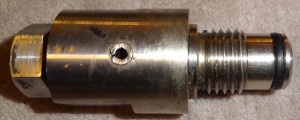
Fig. 10
The drain plug showed in figure 10 uses UNC threads in the connection. The connection has two seal areas: the inner seal is an O-ring and the outer seal is all metal.
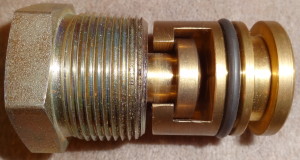
Fig. 11
The fourth alternative I will mention is shown in figure 11. This is a two-part solution, where the lower part consists of two seals, one O-ring at the top and one Chevron ring at the bottom (the bottom rim can be disconnected). Again the plug is screwed all the way in and secured against the upper rim on the plug.
As I have tried to demonstrate, maybe it is time to look at the NPT connection used in high-pressure connections with new eyes? In my opinion, there are alternative connections that are better and safer than NPT. These are more expensive; can this be the reason they are not used?
Vil du laste ned denne artikkelen som PDF?
Klikk her for å laste ned
Relaterte artikler
Why I dislike NPT threads in a hydrocarbon system. Part 1

